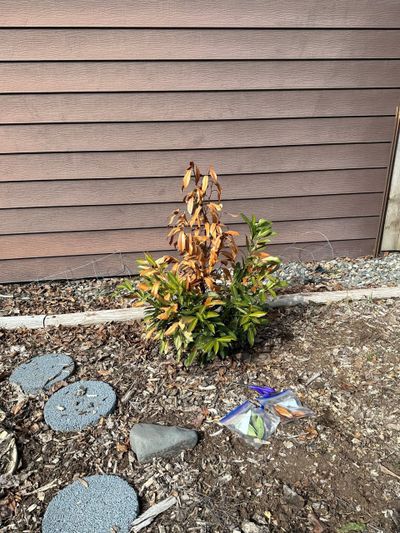Gardening: Effects of extreme weather may show up as plants leaf out

We are slowly creeping into spring this year. Temperatures seem to be stuck in the 50s and below and the threat of an occasional snowstorms is lurking in the forecasts. When I checked the soil temperature last Thursday it was barely above freezing, way below what most plants need to start growing.
It was a rough winter for many plants, even the hardy ones, and the damage will be revealed as things start growing. This will show up as dead twigs or branch dieback on otherwise hardy plants, especially those with fine branches. When winter dropped in on us early last November many plants had barely started into their dormancy cycle which draws water down into the roots. The water that remained in the twigs and branches froze, breaking cell walls which in turn damaged or killed the twigs. Once things leaf out and you can see the dead twigs, nip them back to green wood.
The winter also saw some cold temperatures that we haven’t seen in a few years. While the USDA Hardiness Map says we are in Zone 6 (minus 10 to 0 degrees), the USDA scale doesn’t take into account the cold winds that came with the arctic fronts we experienced. Some of the wind chills were much lower than that. As a result, evergreen shrubs like laurels, hollies and maybe rhododendrons ended up with frostbitten leaves. The best thing to do with shrubs that experienced this is to wait until growth appears on the undamaged part of the plant and then cut back the dead branches to green wood. They might look ratty for the year but should recover.
To add to this, we are likely to continue seeing damage done by the record heat wave a couple of years ago and last summer’s August heat. Plants adapted to our climate can usually handle extremes, but because we’ve experienced several years of weather anomalies and drought, some plants that have been repeatedly stressed by drought and heat may just give up the ghost. I’ve seen a lot of branch dieback in conifers along roadways caused by stress. If you have landscape trees that are struggling, figure out a way to get them regular deep soakings during the hot weather.
With soil temperatures still in the 30s, planting early vegetables may be iffy. Even crops like cabbage, onions, chard and potatoes can be damaged by a hard frost. If you plant early, cover the row with floating row cover or use old milk jugs with the bottoms cut out over individual plants. The covers will hold enough heat to minimize any damage. If the cool spring continues into May, it would be helpful to cover garden beds with black plastic to capture the sun’s heat in the soil. Even an increase of 5 degrees will be enough for cold-weather crops to start growing.
Leaving the row cover on the plants until early June will also allow the plants to grow faster.